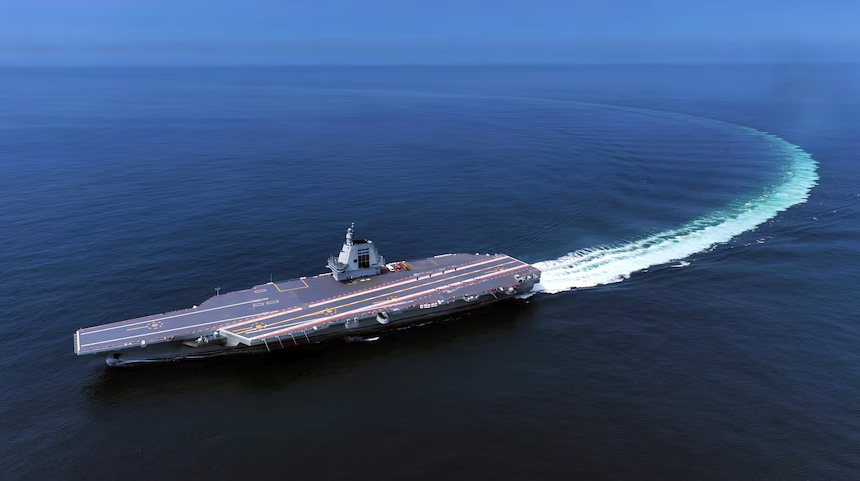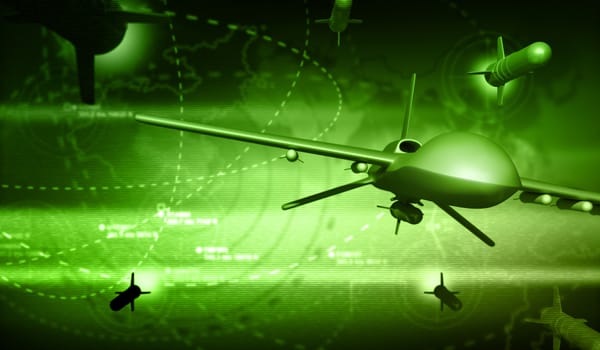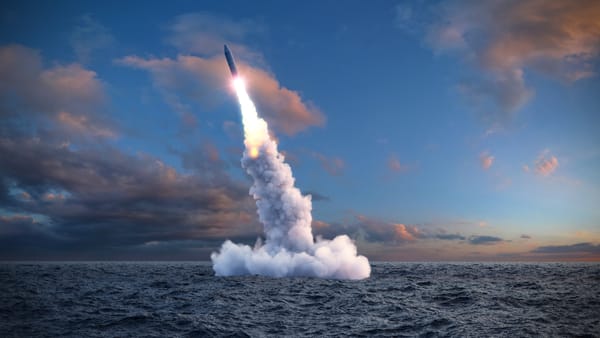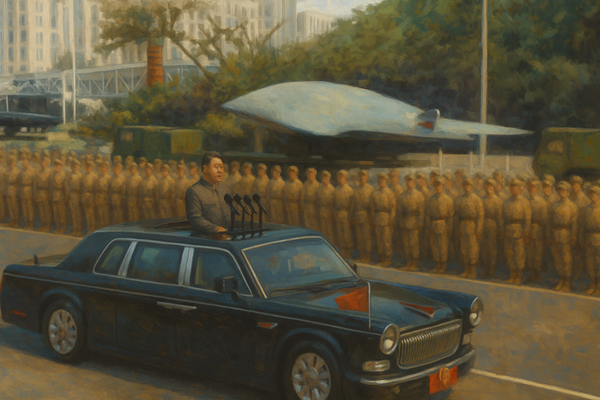🇨🇳 China’s Fujian Aircraft Carrier: A Turning Point in Maritime Power Projection
China’s new Fujian aircraft carrier signals a bold step toward global naval power, blending technological ambition with strategic intent.

- China’s Fujian carrier marks a technological leap, using electromagnetic launch systems that bring it closer to U.S. carrier capabilities.
- The deployment reflects Xi Jinping’s drive to project military power and restore confidence amid corruption scandals in the PLA.
- Despite progress, China still faces experience and capability gaps, with U.S. carrier forces remaining more advanced and globally dominant.
China’s newest and most sophisticated aircraft carrier, Fujian, has officially entered service, an event that underscores Beijing’s accelerating ambition to close the naval power gap with the United States. Beyond the ceremonial pomp of Xi Jinping inspecting fighter decks in Hainan, this commissioning marks a decisive moment in China’s long-term quest to project maritime influence across the Indo-Pacific.
From Coastal Defense to Blue-Water Power
The Fujian (Type 003) represents a leap forward from China’s earlier carriers, Liaoning and Shandong, both of which were transitional platforms based on older Soviet designs. Unlike those predecessors, Fujian was entirely designed and built domestically, symbolizing China’s industrial and technological confidence. Its most notable advancement is the electromagnetic aircraft launch system (EMALS), a feature shared only with the U.S. Navy’s newest Gerald R. Ford-class carriers.
This innovation allows China to launch heavier, more capable aircraft at a faster rate and with less mechanical strain. In practical terms, Fujian can deploy a more diverse air wing, potentially including early-warning aircraft and stealth fighters, rather than relying solely on lightweight jets. That translates into longer reach, broader surveillance coverage, and more sustained offensive operations, essential attributes for a “blue-water navy” able to operate far from home shores.
A Strategic Milestone for Xi Jinping
For President Xi Jinping, the commissioning of Fujian carries deep symbolic weight. China’s leadership has made no secret of its desire to transform the People’s Liberation Army (PLA) into a “world-class force” by 2049, the centenary of the People’s Republic. The unveiling comes amid internal turbulence, recent high-profile purges of senior officers on corruption charges, and provides a counter-narrative of progress and modernization.
Xi’s personal involvement in the ship’s design decisions, reportedly including the choice of electromagnetic catapults, reinforces the linkage between his leadership and China’s military renaissance. The message, domestically and internationally, is clear: despite internal challenges, Beijing remains steadfast in its pursuit of naval parity with the United States.
The Balance of Naval Power
In quantitative terms, China still trails far behind. The U.S. Navy operates 11 nuclear-powered supercarriers, each capable of sustained operations for decades without refueling. China’s fleet of three—Liaoning, Shandong, and now Fujian—are conventionally powered, limiting endurance and range. Yet the trajectory matters more than the current tally. Satellite imagery suggests a fourth carrier is already under construction, with persistent rumors of nuclear propulsion being tested for future designs.
This steady buildup aligns with Beijing’s strategic objective: to secure maritime dominance within the “first island chain”—a defensive perimeter stretching from Japan through Taiwan to the Philippines—and to extend operational reach into the Western Pacific and Indian Ocean. Carriers, with their symbolic and coercive power, are central to that vision. While skeptics question their vulnerability to modern anti-ship missiles, both China and the U.S. continue to see them as irreplaceable instruments of global influence.
The Taiwan Factor and Regional Implications
The Fujian’s debut inevitably reverberates across the Taiwan Strait. While an aircraft carrier may not be tactically decisive in a short-range conflict over the island—where China’s mainland air bases already provide extensive coverage—it amplifies Beijing’s capacity for intimidation and blockade. A carrier strike group operating east of Taiwan could effectively “encircle” the island, disrupting supply lines and signaling escalation readiness.
Beyond Taiwan, the ship also alters perceptions in the South China Sea and beyond. For Southeast Asian states with overlapping maritime claims—Vietnam, the Philippines, Malaysia—the prospect of a larger, more confident Chinese carrier fleet reinforces the asymmetry of power. It also challenges U.S. allies like Japan and Australia to recalibrate defense strategies, including investments in anti-access capabilities and tighter coordination with Washington.
Technology and Training: The Hard Work Ahead
Despite its impressive hardware, Fujian’s full potential remains years away. Mastering carrier operations demands extensive training, coordination, and logistical sophistication. Launching and recovering aircraft in rough seas, maintaining high sortie rates, and integrating complex task groups are skills that take decades to refine. The U.S. Navy’s institutional knowledge—built through a century of continuous carrier operations—remains unmatched.
Chinese naval aviation is still maturing. Reports suggest that pilots are undergoing intensive deck qualification exercises and that new aircraft, possibly a carrier-borne version of the stealth J-31 fighter, are being tested. Yet operational efficiency depends as much on experience as on equipment. As Japanese analyst Aita Moriki observed, China faces “many technological and personnel challenges” before it achieves true carrier proficiency.
The Symbolism of the Sea
Carriers have always been political as much as military assets. For the United States, they are floating symbols of deterrence and reassurance, visible proof of commitment to allies from Europe to the Pacific. For China, Fujian plays the same role in reverse: projecting confidence, deterring intervention, and asserting Beijing’s claim to regional leadership. Each port call and exercise will be choreographed to communicate that message.
At home, Fujian also feeds nationalist pride. Chinese state media has framed the ship as evidence that China can now “build what America builds,” emphasizing self-reliance and technological parity. This narrative fits into Xi’s broader strategy of fostering unity through strength and reclaiming what he calls China’s rightful place as a great maritime power after centuries of vulnerability.
The Carriers vs. the Missile Age Debate
Some analysts argue that the era of massive aircraft carriers is waning. Hypersonic glide vehicles, long-range precision missiles, and autonomous drones could, in theory, neutralize such large targets. Yet the world’s two most advanced militaries, the United States and China, are both doubling down on them. The reason is that carriers are not merely warfighting tools; they are geopolitical stagecraft. They enable presence without permanent bases, humanitarian response without occupation, and signaling without escalation.
As Taiwan’s defense researcher Jiang Hsin-biao notes, “Even the U.S. is building new carriers, demonstrating their lasting value.” The vulnerabilities of carriers are real, but so are their unique advantages: flexibility, deterrence, and political theater. The contest between U.S. and Chinese carrier doctrines will thus define much of Indo-Pacific naval strategy in the coming decade.
The Long Game
Fujian’s commissioning is not the end of a journey but the beginning of a new phase in China’s maritime ascent. It reflects decades of shipbuilding investment, doctrinal evolution, and political will. It also signals to regional powers that Beijing’s ambitions are no longer confined to protecting its coastline—they extend across the global commons.
Still, the United States retains decisive advantages: nuclear propulsion, decades of combat experience, and a vast network of allies. China’s challenge lies in translating its industrial capacity into operational credibility and sustaining that effort amid economic headwinds and institutional corruption.
Outlook. Power, Prestige, and Projection
In many ways, Fujian embodies the paradox of modern Chinese power—technologically impressive, strategically ambitious, yet still in transition. Its deck may one day host stealth fighters ranging across the Pacific, but for now it remains a symbol more than a sword. Whether it eventually reshapes the balance of naval power will depend not just on engineering, but on endurance: the ability to sustain complex operations, maintain transparency, and learn from inevitable setbacks.
What is certain is that Fujian has changed perceptions. The world can no longer view China as a regional maritime actor. It is now a global naval aspirant—one aircraft carrier closer to turning ambition into capability.




